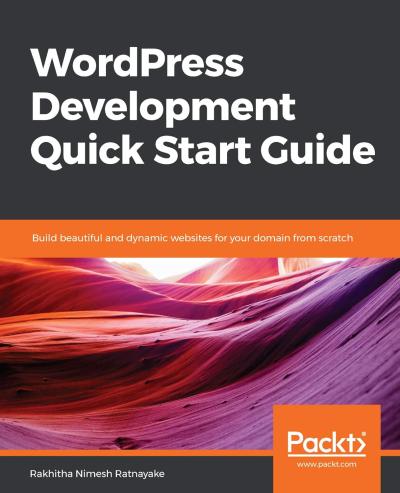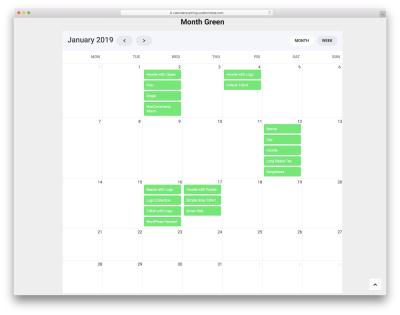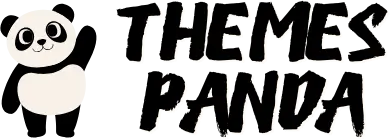Emoji-to-CSS Class Mapper
Select Your Emoji
Recent Emojis
CSS Magic
Select an emoji to see its CSS transformation!
Related CSS & Animation Tools
Crank up your designs with these rad CSS and animation tools. They’re perfect for crafting visuals that’ll have everyone double-tapping their screens!
CSS Clip-Path Generator
Carve out wild shapes for your elements with this dead-simple tool. It’s like digital origami for your site!
CSS Animation Time Visualizer
Fine-tune your animations to flow like a perfect playlist—no skips, just smooth vibes.
CSS Z-Index Visualizer
Stack your elements like a pro with this tool. No more “why is this thing hiding?” headaches.
CSS Class Unroller
Untangle messy CSS classes so your code reads like a breezy novel, not a puzzle.
CSS Icon Pack Name Checker
Make sure your icon packs play nice with your project. It’s like a VIP list for your icons.
Last Tuesday I was building a client website. Everything was going smooth until I hit the colors. You know that moment when you stare at a blank CSS file and your brain just goes "nope"? That was me. Spent thirty minutes scrolling through Adobe Color, then another twenty on Coolors.co, still nothing felt right.
Then I found this weird little tool called Emoji-to-CSS Class Mapper. Sounds goofy, right? But man, it actually works. You literally just click an emoji and it spits out Tailwind classes. No joke. I clicked 😎 because I wanted something cool and professional, and boom - got bg-black text-white border-yellow-500. Dropped it in my code and it looked perfect.
Why didn't someone think of this sooner? We use emojis to express everything else, why not colors? Makes way more sense than staring at color wheels for hours.
Here's How It Works (Super Simple)
Okay so you go to the website. There's just a bunch of emojis sitting there. No signup, no email capture, no "watch our demo video first" garbage. Just emojis.
Click one. Any one. Let's say you pick 🔥 because you want something energetic.
The tool immediately shows you Tailwind classes that match that vibe. Not just one color either - you get background, text, and border colors that actually work together. Then you copy the whole thing and paste it straight into your project.
That's it. No color theory degree required.
What blew my mind was how obvious the connections are once you see them:
- 🌊 gives you calming blues and teals
- 🌸 suggests soft pinks and pastels
- ⚡ screams bright yellows and electric colors
- 🌙 goes dark with deep blues and grays
It's like having a friend who actually understands color but explains it in normal human language.
Why This Actually Makes Sense
Think about it. When you text someone 😴, what do they think? Tired, sleepy, calm, maybe lazy Sunday vibes. When you send 🎉, it's celebration time, energy, excitement.
Emojis already carry emotional weight. We've been trained by years of texting to associate them with specific feelings. So why wouldn't that work for design?
"I used to spend more time picking colors than actually building features. Now I just pick an emoji and move on."
My nephew could look at 💚 and tell you it feels fresh and natural. Meanwhile I'm over here with my design degree trying to remember if that's a warm green or a cool green and what that means for contrast ratios.
The tool basically shortcuts all that overthinking. Want something that feels trustworthy? Pick 💼. Need energy? Go with ⚡. Want calm? Try 🌊. Your gut already knows what these mean.
Perfect for Tailwind Users (Finally!)
If you use Tailwind, you know the pain. Great framework, terrible for memory. Is it bg-red-500 or bg-red-600? What about text-gray-700 versus text-gray-800?
I have the Tailwind docs bookmarked three different ways and I still end up googling "tailwind blue colors" at least twice a week. It's embarrassing but true.
This tool just eliminates that whole problem. No more memorizing class names or hunting through documentation. Pick your emoji, get your classes, done.
Plus it gives you combinations that actually work. Ever picked a background color and then spent ten minutes figuring out what text color won't make your users go blind? Yeah, the tool handles that too.
| Emoji | My First Thought | Color Direction |
|---|---|---|
| 🌮 | Fun, casual, friendly | Warm oranges, browns |
| 🚀 | Fast, innovative, tech | Blues, silvers, gradients |
| 🌺 | Tropical, vibrant, alive | Bright pinks, corals |
| ⭐ | Premium, special, golden | Golds, yellows, luxury tones |
Real Examples from My Recent Projects
Let me tell you about some actual times this saved my butt.
Food delivery app: Client wanted something "fun but trustworthy." I was stuck between playful colors that looked unprofessional and serious colors that looked boring. Tried 🍕 on the tool and got this perfect orange-red combo that felt friendly but reliable. Client loved it immediately.
Meditation website: Needed something calming without being boring. The usual blue felt too corporate, green felt too medical. Used 🧘 and got these gorgeous soft purples and grays. Perfect zen vibes without putting people to sleep.
Tech startup landing page: They kept saying "innovative but approachable." What does that even mean in color terms? Clicked 🚀 and got a sleek blue-silver combo that screamed "future" without being cold. Boom, done.
Local bakery rebrand: Wanted "warm and homey" but not "boring beige." 🥐 gave me these beautiful warm browns and cream colors that felt like fresh bread without looking like every other bakery website.
Each time, the emoji choice just made sense immediately. No explaining color psychology to clients, no debating whether something feels "premium enough." The emoji says it all.
The Copy-Paste Game Changer
Here's what really sets this apart from other color tools. You don't just get inspiration - you get actual working code.
My old process was brutal. Find a color I like, screenshot it, open the dev tools color picker, try to match it, convert to hex, figure out the Tailwind class, type it in, realize it looks different in context, repeat.
Now? Click emoji, copy snippet, paste, move on. The whole color decision takes literally ten seconds instead of ten minutes.
And the snippets actually work! They're not just random color combinations. Someone clearly thought about which colors pair well together. The text is readable, the borders make sense, everything just clicks.
Who Should Use This Thing?
Honestly? Anyone who builds websites and gets stuck on colors. But it's especially good for:
Developers who hate design decisions: You can code anything but color choices make you want to quit programming? This is for you. Takes all the guesswork out.
Freelancers on tight deadlines: When you're billing by the hour, spending thirty minutes on color selection hurts. This tool gets you moving fast.
People new to Tailwind: Instead of getting lost in all the utility classes, focus on the feeling you want and let the tool guide you.
Anyone building quick prototypes: Need to test different visual directions fast? Click through different emojis and see your design take on completely different personalities.
Even my designer friends use it sometimes. Not because they can't pick colors, but because it's just faster for certain projects.
The Psychology Part (Don't Worry, No Textbook Stuff)
There's actual science behind why this works, but I'll keep it simple. Colors make people feel things. Red makes you think danger or excitement. Blue suggests trust and calm. Green feels natural and safe.
We already know this stuff intuitively. That's why stop signs are red and hospitals use blue and green. The tool just takes that intuitive knowledge and turns it into usable CSS.
When you pick 💜 over ❤️, you're choosing mystery and luxury over passion and energy. The tool gets these subtle differences and translates them into color schemes that actually support the experience you're creating.
Your users might not consciously notice the difference, but they'll feel it. And in web design, feeling is everything.
Beyond Just Backgrounds
One thing I really appreciate is that it doesn't just suggest one color and leave you hanging. You get complete combinations - background, text, borders - that work together.
Getting color relationships right is actually super hard. I can pick a nice purple, but what text color goes with it? What about accent colors? The tool figures all that out automatically.
It's like having a color consultant who never charges by the hour and never gets tired of your indecisiveness.
Decision Fatigue Is Real
Can we talk about decision fatigue for a second? When you're deep in a project, you make hundreds of tiny choices every day. Font sizes, spacing, animations, layouts. Each decision drains a little energy.
By the time you get to colors, sometimes your brain just gives up. You pick whatever's easy and move on, even though you know colors matter for user experience.
This tool helps preserve your mental energy for the decisions that actually require your expertise. Color harmony becomes automatic, so you can focus on the stuff that really needs your attention.
Where Design Tools Are Heading
This tool represents something bigger happening in design. Tools are getting more intuitive, more human. Instead of making us think like computers, they're starting to understand how humans actually think.
We don't naturally think in hex codes or RGB values. We think in emotions and feelings. Tools that bridge that gap are going to win.
Five years from now, I bet we'll look back at the old way of picking colors and wonder why we made it so complicated. This feels like a glimpse of that future.
My Honest Take
Look, this isn't going to revolutionize design or replace human creativity. It's just a really good solution to an annoying everyday problem.
I've been using it for about two months now, and it's become part of my regular workflow. Not for every project, but for the ones where I need to move fast or when I'm just stuck on color decisions.
Sometimes the best tools are the ones that solve small problems really well. Problems you didn't even realize were slowing you down until they're gone.
The Emoji-to-CSS Class Mapper is one of those tools. Simple idea, solid execution, saves time. What more do you want?
Try it next time you're stuck on colors. Worst case, you waste thirty seconds clicking an emoji. Best case, you just found your new favorite design shortcut.
Latest Insights and Resources

The Ultimate Guide to Building Your WordPress Site from Scratch
Starting a website might seem overwhelming at first, but with WordPress, it’s more accessible than you think. Whether you’re creating […]

Exploring Behestmtl.wordpress.com: A Look at WordPress & Twitter Integration
Welcome to our deep dive into behestmtl.wordpress.com, a vibrant platform that combines the power of WordPress with seamless Twitter integration. […]

How to Embed a Calendar into WordPress for Better Scheduling
Are you looking to make your website more organized and user-friendly? Embedding a calendar into your WordPress site is a […]
